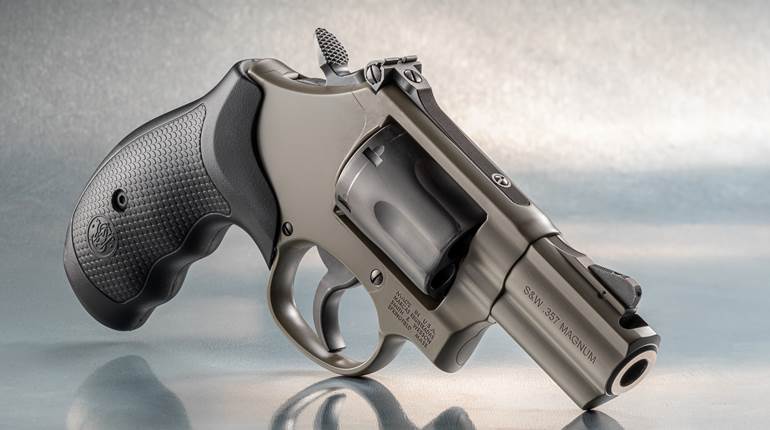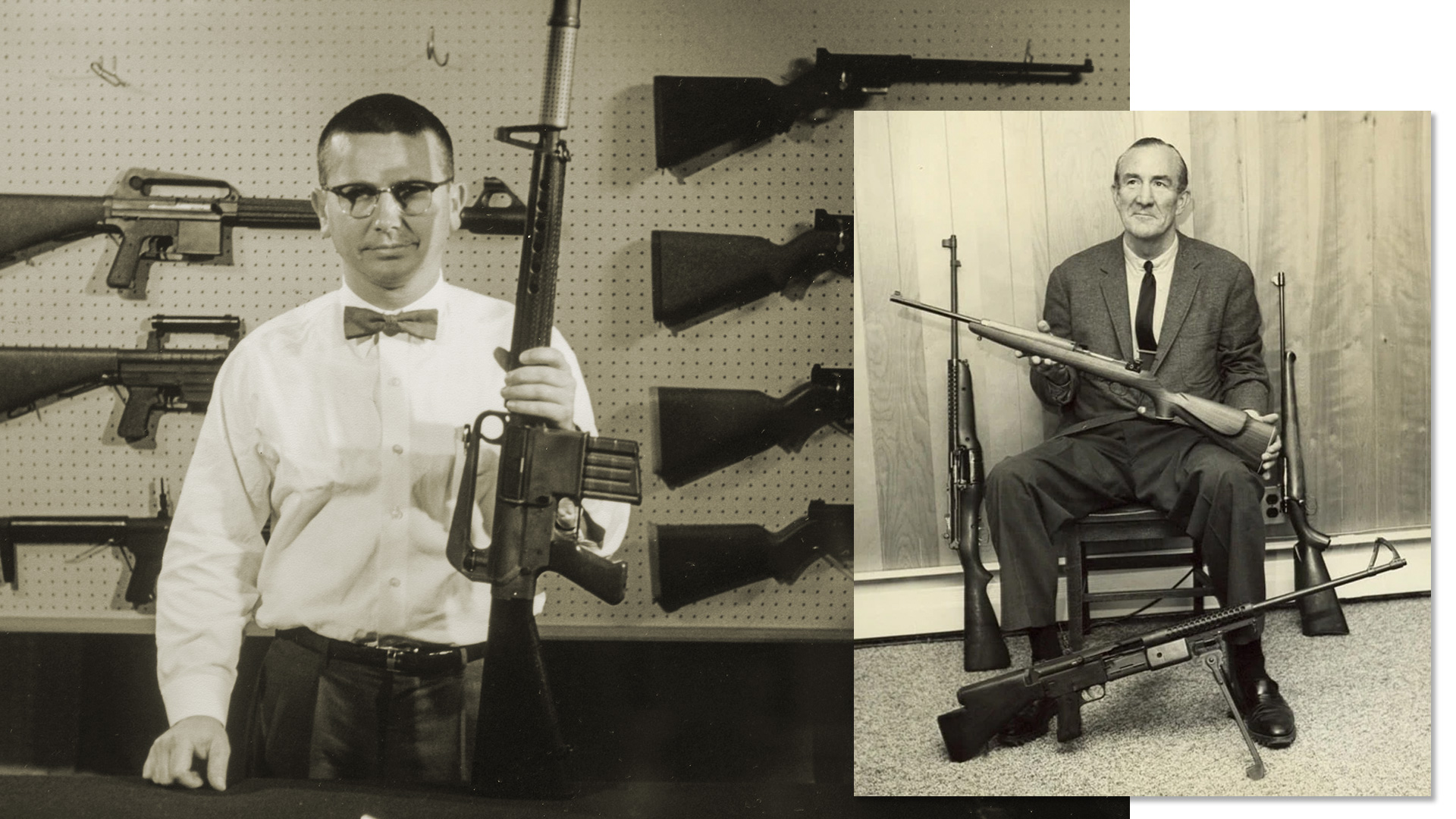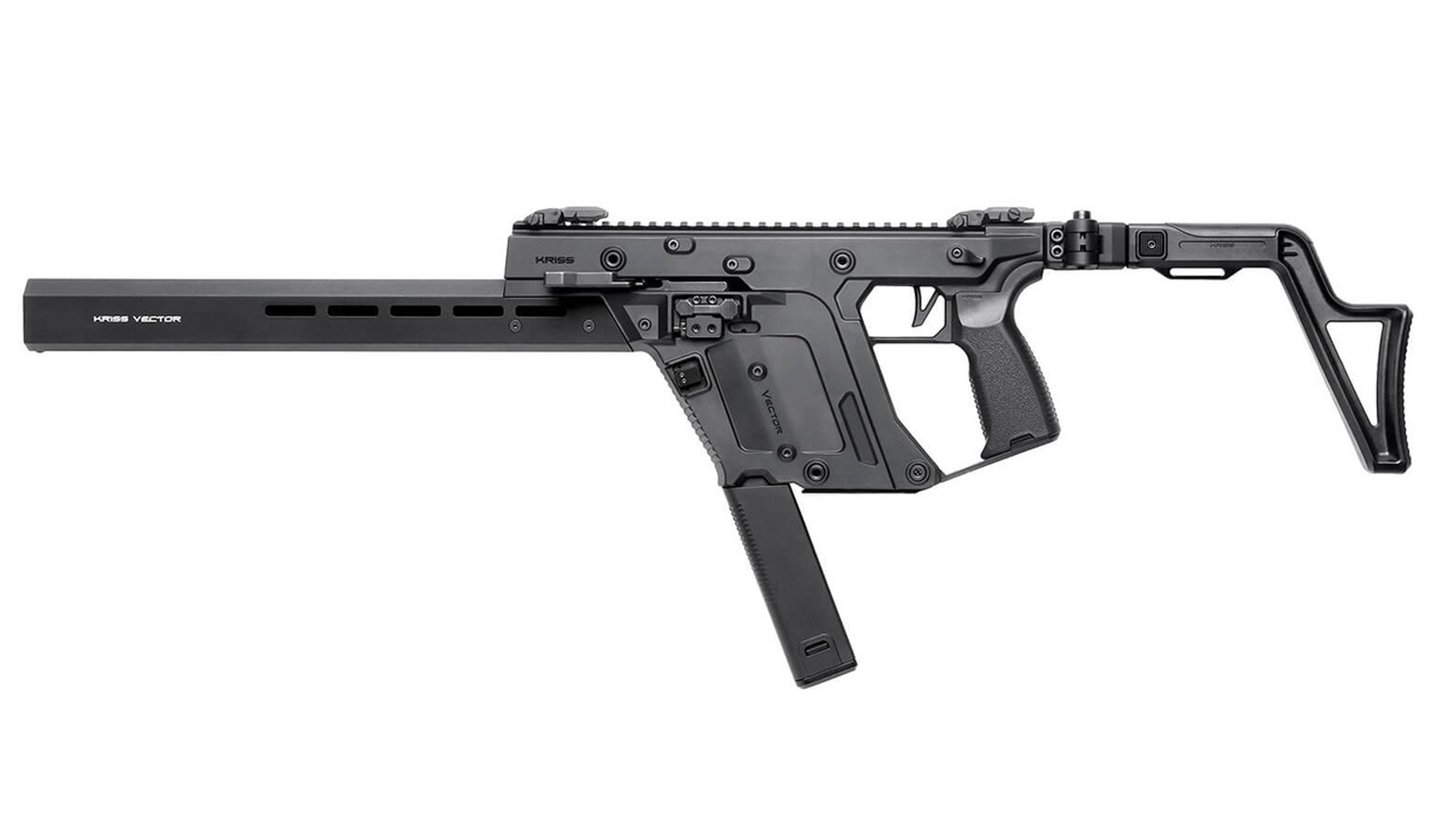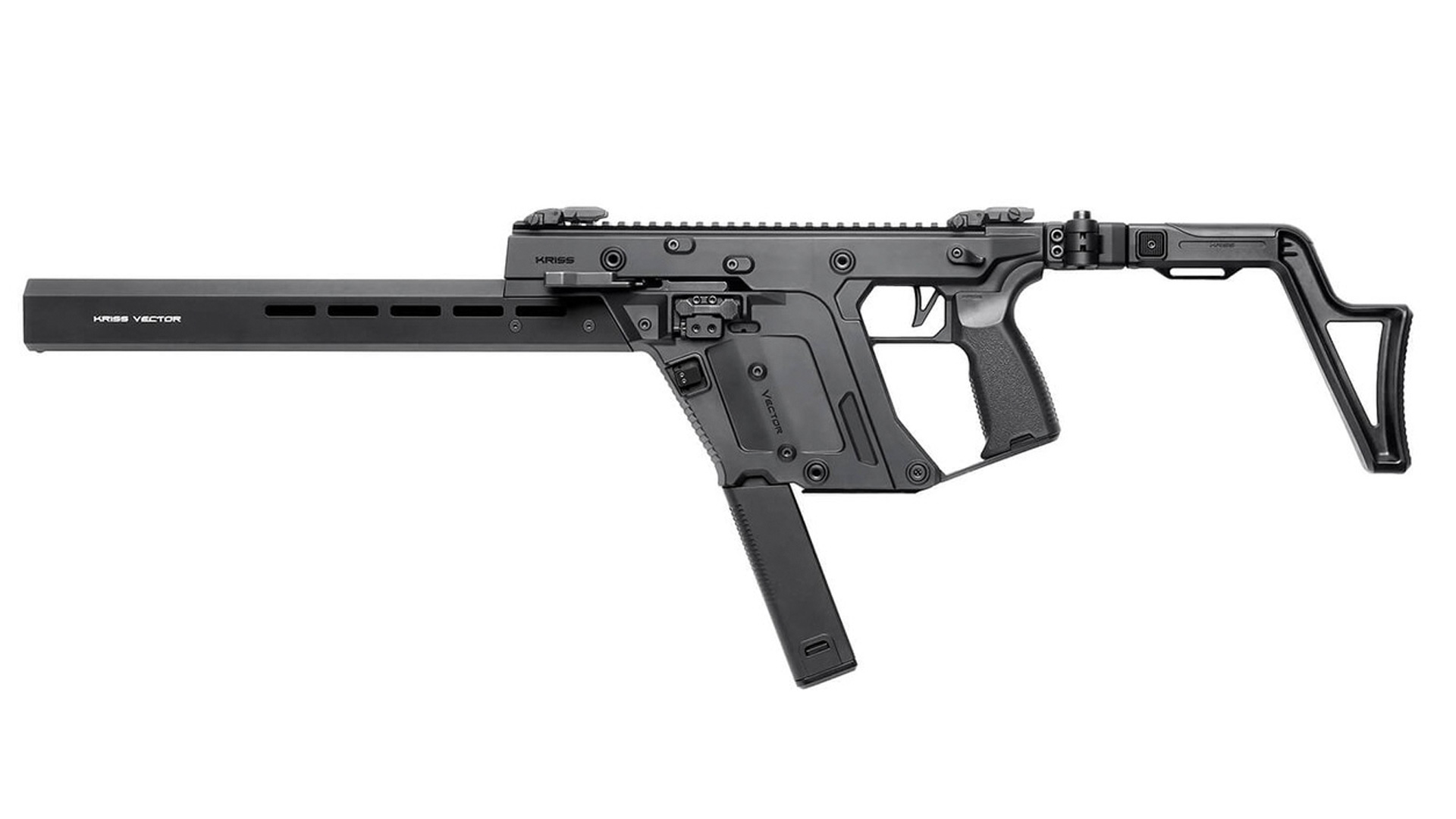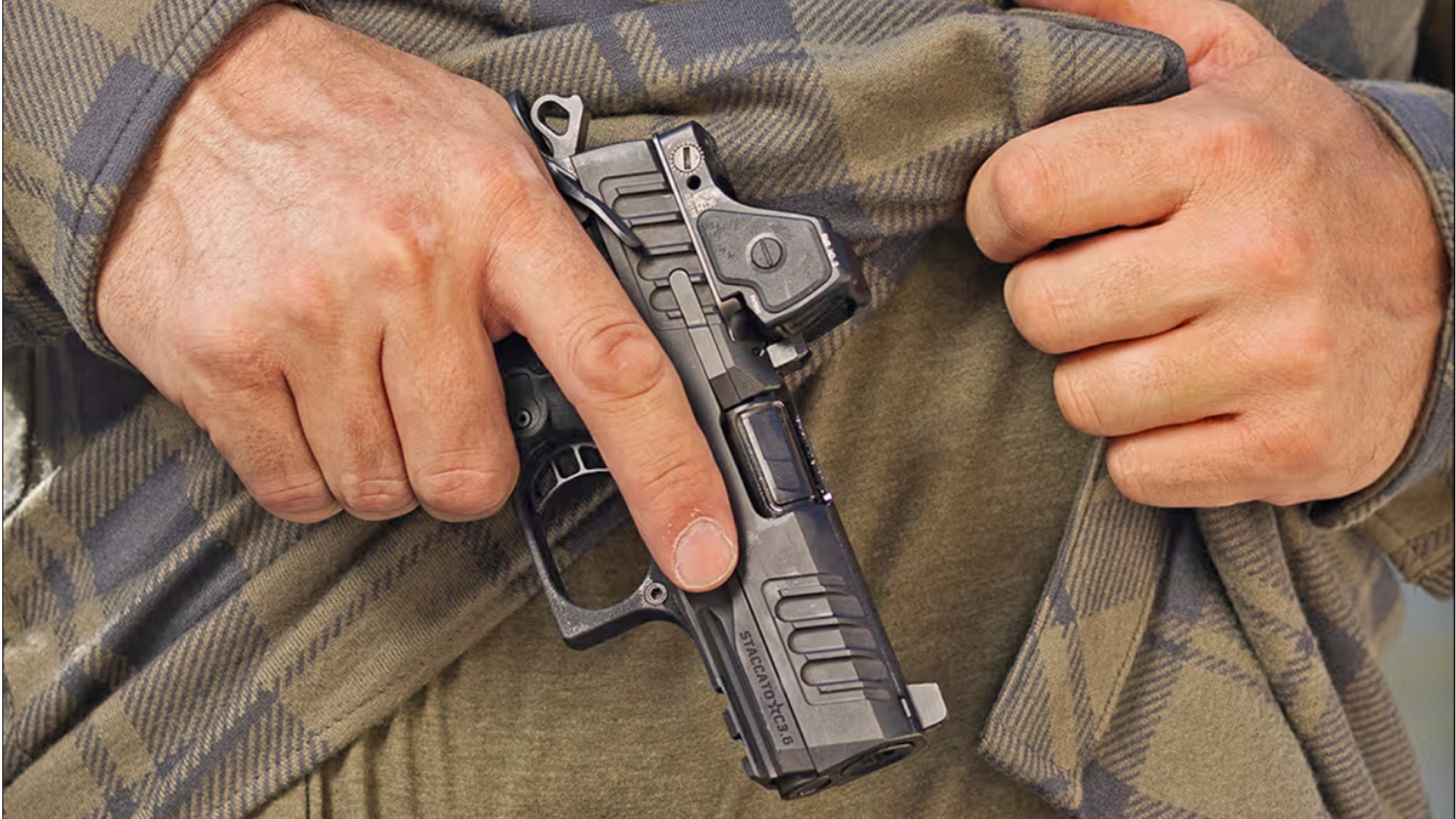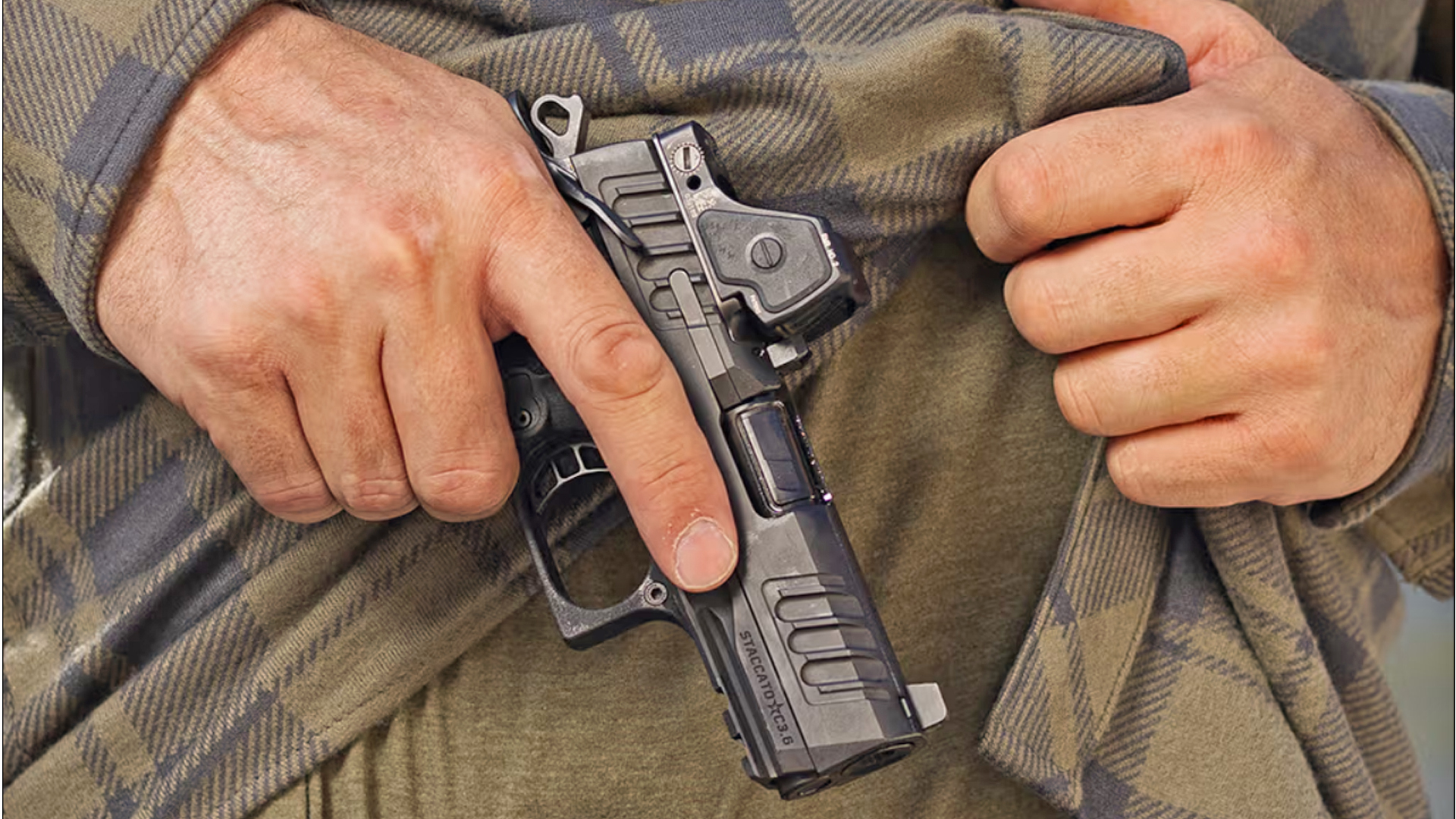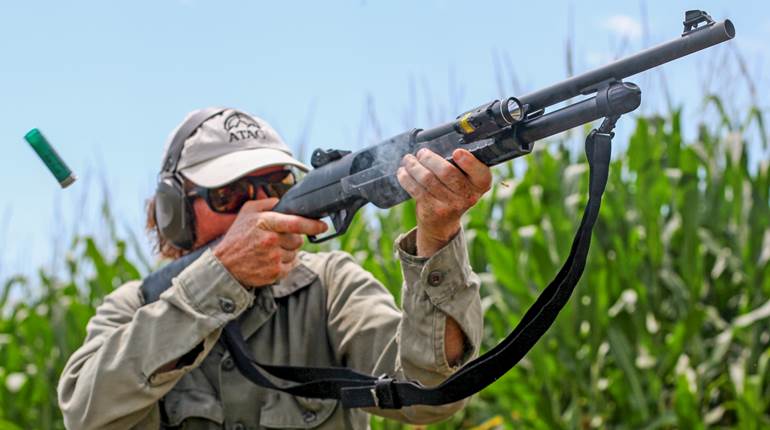
In 160 years of revolver making, Smith & Wesson has never offered a wheelgun quite like this one. It is a revolver to be sure, but it is unusual enough to deserve special consideration. The Governor is the latest in a long line of innovative products from the world’s best-known maker of revolving handguns. A variation of the century-old N-frame revolver, it is a six-shot chambered for your choice of 21/2-ich, .410-bore shotshells and .45 Colt and .45 ACP cartridges. Intended for close-range personal defense, the Governor sports a 2 3⁄4-inch barrel, traditional double-action/single-action lockwork and a businesslike, matte-black finish. There should be no doubt that S&W developed this product in order to compete with the very popular Taurus Judge. But, by comparison, S&W offers a six-shot cylinder versus the Taurus’ five, and has a cleverly designed chamber system that allows the firing of .45 ACP cartridges with moon clips from the same cylinder. S&W does not yet offer a 3-inch, .410-bore option. The Governor is also available from the factory with Crimson Trace Lasergrips at additional cost.
S&W builds the Governor on a special version of the classic N-frame with an elongated window that measures 2.755 inches, allowing it to accept the 2.550-inch-long cylinder. A typical N-frame has a 1.875-inch-frame window. The frame is made from S&W’s proprietary scandium-aluminum alloy because conventional steel would result in a gun so heavy as to be difficult to carry. The Governor’s cylinder is made of stainless steel and is heavy; however, using titanium, which would have resulted in a lighter gun, would also have been unacceptably expensive. As delivered, the Governor is a 30-ounce revolver measuring 8½ inches in length and 5½ inches in height. With the additional weight of six cartridges and/or shells, it is not the easiest-carrying gun out there, but on the other hand there’s nothing available that will deliver the same payload in that size/weight package. An available Desantis Speed Scabbard promises to make carrying the Governor reasonably pleasant.
It’s pretty much understood that .45 Colt ammunition will fit and fire in .410 handgun chambers, and it is also accepted that a revolver can be compatible with both .45 Colt and .45 ACP cartridges provided it is a switch-cylinder affair with a dedicated cylinder for .45 ACP, which typically headspaces on the case mouth. Revolvers designed for the .45 Colt cartridge, which headspaces on the case rim, will allow .45 ACP cartridges to slip into their chambers, but they drop in so deep that their primers are well away from the firing pin’s reach.
The Governor solves that problem with a tried-and-true solution: the use of moon clips that snap into the cartridges’ extraction grooves. The famous half-moon clip, developed by Joseph H. Wesson in 1917 for speedy extraction, essentially made rimless cartridges into rimmed ones. The Governor handles .45 ACP cartridges by headspacing off its included third-moon (two-shot) or full-moon (six-shot) clips that lie in a recess in the cylinder’s face, making it usable with the entire range of .45 ACP ammunition. The moon clips also offer the benefit of rapid loading. Note that the Governor does not accept the .45 Auto Rim, as its rim is too thick.
In my book, this great ammunition versatility is a major selling point for the Governor. The old .45 Colt can be handloaded to impressive performance levels, as long as it is fired in strong, modern revolvers. Among the .45 Colt options are several heavy-bullet lead semi-wadcutters. But everything in .45 ACP also works in the gun. From light, semi-wadcutter target loads, through dozens of jacketed hollow points to plain-old full metal jackets, the .45 ACP is available in many forms. More important to the economics of practicing, .45 ACP can be had at all price points. That is not true for the .45 Colt.
The Governor will also accept and fire all 2½-inch, .410 shotgun loads including those recently developed for personal protection. Generally those shells use plastic shot cups carrying various sizes of shot or, more commonly, several 00 (0.33 inches) or 000 (0.36 inches) buckshot. There is some amount of spin imparted by the rifled barrel, but short-range use does not affect patterns. Federal Cartridge offers loads using No. 4 shot and 000 buckshot. Remington is fond of both sizes of buckshot. Winchester has gone even further with a special duplex load using BBs and beveled-edge “Defense Discs” measuring 0.25 inches by 0.400 inches in diameter. The 2½-inch version has three discs and 12 BBs. Velocities vary greatly, but all of the loads I fired through the gun turned in respectable accuracy.
There has been a fair amount of Internet buzz as to whether or not this unique revolver has a worthwhile place in the scheme of things. It’s a fair question—and one that can be answered by a quick check of the gun’s performance. First, let’s look at the possible use of the Governor as a survival and/or emergency tool. For some tasks, such as small game foraging, the Governor could serve well—although a stocked .410 shotgun with a choked, smoothbore barrel would be better. The Governor might be an even better choice if space were at a premium, as in an aircraft survival kit. If you can accept its limited range—the barrel is only 2 3/4 inches—the gun has respectable performance in forced small game hunting situations. Remember that, in addition to the special personal-defense .410 loads already mentioned, the gun will shoot all 2½-inch shells of .410 size, so there is a good range of shot sizes available.
In some locales, there is a problem with venomous and/or rabid pests. The Governor’s ability to focus power in the form of a shot column of destructive pellets would seem to qualify it for such use. In the case of larger animals, such as feral dogs or even bears, we have to consider the Governor’s .45 Colt or .45 ACP options. Not the ideal gun, but not out of the question, either.
Most handgunners who buy a Governor will likely be selecting it for personal defense against human predators. For those shooters who recall the .410 shotguns of their youth as minimalist arms not suitable for serious defensive applications, consider the following. In its latest defensive loadings, the .410 shotshell features 000 buckshot at velocities around 1,200 fps. That is the same 000 pellet as used in the best of 12-gauge loads and at roughly the same speed. The difference is the number of pellets per shell—four for the .410 and eight for the 12 gauge. Logically, you could expect about half the effect from a .410 compared to a 12. However, it is usually one or two pellets in any shotshell that do the lethal work, so it wouldn’t matter if they come from a .410 or a 12. This is not to say that a .410 buckshot round from a revolver in any way equates to a 12-gauge buckshot round, because it absolutely does not. But the .410 load is still going to inflict significant wounds.
Nobody ever seems to question the .45 Colt as an effective fighting round. After all, when the U.S. Army was designing its first cartridge handgun and the ammunition for it, that was what it chose. The Governor will fire any commercially loaded .45 Colt load, which is a popular cartridge for handloaders, but I would advise using the milder recipes intended for most double-action/single-action revolvers, not the ones developed for Rugers, Freedom Arms and the single-shots. There are a few potent loads for the old frontier-era cartridge, ones that use modern bullets such as the Speer Gold Dot, Winchester Bonded PDX1 or Hornady FTX. With any kind of load, the .45 Colt has a long and impressive record as a fight-stopper.
The last cartridge used in the Governor is the .45 ACP, one of America’s favorites. Every major ammunition maker offers a range of loads for the ACP. There are even bargain-priced imports in bigger sporting goods stores. This situation tends to make the Governor more appealing as a shooter and make it a gun with which you can afford to regularly practice. Remember that shooting the .45 ACP requires the use of the included moon clips.
S&W’s marketing department has made much of the “Mix-Six-Shooter” aspect of using the Governor, so the two-shot moon clips allow “pattern loading” the cylinder—an interesting endeavor that forces you to speculate as to what threat is likely to come first. In that case it is essential to know which way the cylinder rotates—the Governor’s rotates counter-clockwise from the shooter’s point of view—so that a particular load can be staged to move into position behind the barrel upon firing the gun.
At the range, there were some interesting findings. As a conventional revolver in .45 Colt and .45 ACP, I fired the gun clamped into a Ransom Rest at a target 25 yards away. Accuracy for five consecutive, five-shot groups with two different .45 ACP and two .45 Colt loads was good. But the .410 shotgun aspect of the Governor’s performance is probably more intriguing to the defensive handgunner for whom the gun was made. I shot five-round strings of three different defensive loads, with an NRA B2 target placed at 5 yards. The Governor’s rear sight is fixed and the front, which is fitted with a tritium dot, is drift-adjustable for windage only, yet I was able to group most loads in a 4-inch circle at that distance. That means most pellets inside that circle. There is an exception in the BB shot used under the Defense Discs in Winchester’s PDX1 load. They spread evenly over a 12-inch circle. Any concern a shooter might have about the rifled barrel swirling the shot in a doughnut shape is unfounded.
When you fire a 000 buckshot load from a Governor, you are delivering almost a 300-grain payload at 1,200 fps. That is magnum performance, and the gun recoils sharply. At 30 ounces, the Governor is not particularly heavy, but the long cylinder made of steel is well forward of the hand and the twisting is pronounced.
Although the Governor isn’t the sweetest-shooting revolver that ever left the Springfield plant, it accomplishes the goal S&W has set in front of itself for a very long time—providing Americans with capable tools to protect themselves and their property.
Manufacturer: Smith & Wesson; (800) 331-0852; www.smith-wesson.com
Caliber: .410-bore (21⁄2"), .45 Colt, .45 ACP
Action Type: double-action/single-action center-fire revolver
Frame: scandium alloy
Barrel: 23⁄4"
Rifling: six-groove, 1:18.75" RH twist
Cylinder Capacity: six
Sights: fixed, tritium post front
Trigger Pull: double-action, 10 lbs.; single-action, 3 lbs.
Overall Length: 8½"
Width: 1¾"
Height: 5½"
Weight: 29.6 ozs.
Accessories: lockable case, owner’s manual, cable lock, six- and two-round moon clips
Suggested Retail Price: $679; (with Crimson Trace Lasergrips, $899)














